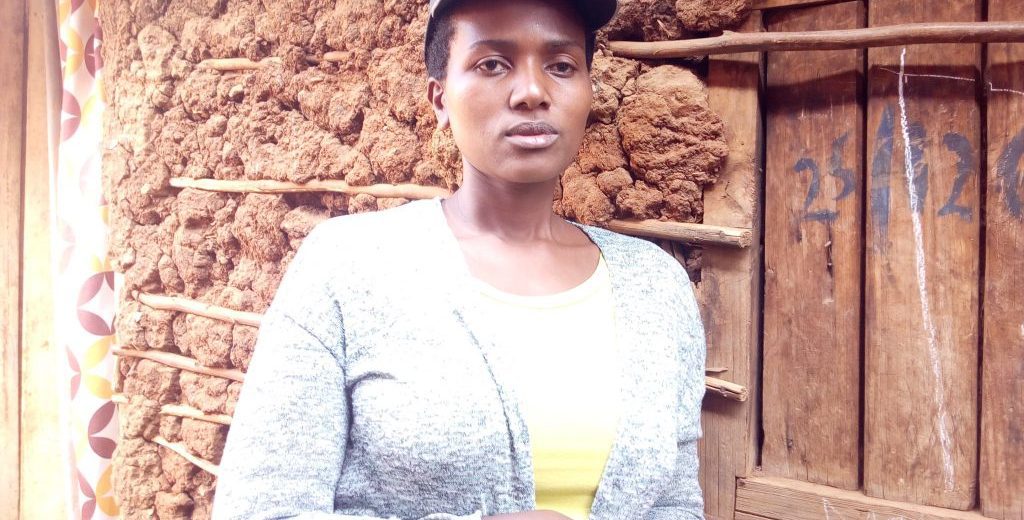
“It is important to uphold and observe ethics in mapping, data collection, and packaging. This has proved to be quite a challenge. Approximately, only 30% of researchers and academia come back to the community to verify and share their collected data.” To get to grips with this issue and how to handle it, we talked to Nicera Wanjiru, a young activist driving change in her community and fighting for her community’s right to data and information.
Our story starts in Kibera, undoubtedly the largest informal settlement in Africa in terms of population per square mile. Such a scenario makes it susceptible to issues like sexual and gender-based violence (sgbv), crime and drug abuse, due to its high population density. With the most basic of necessities such as water and sanitation considered a privilege, Nicera seeks to make this a thing of the past through proper planning. She started a foundation, Community Mappers, which uses data to realize a better quality of life among the members of her community.
The data and mapping process
We met at around 2PM in Kibera, where she picks me up at a local store as earlier agreed. We hold a small conversation as we walk through a long stretch of alleys between house blocks. “This is where we assemble every Thursday of the week,” she says. “Before setting out to collect data, we do mapping where we identify regions with the most pronounced issues in our community. This rough sketch (she points to a white board) represents areas in Kibera with rampant issues of crime and sgbv. After identifying the areas, we conduct a survey along the mapped regions. We then compile our findings.”
“It is a philosophy of ours to verify the data findings with the community before publishing. Once verified, our data is open for both the public and the government to access it. I am a trained geospatial data collector with 10 years of experience. My experience has opened my eyes to the gaps within my community, which I know can only be bridged using data. Back in 2020, I founded Community Mappers. Its aim was to empower my community to collect and use data to advocate for their needs. As a survivor of gender-based violence, I knew I could change my community and influence young people through my experience.”
How is data the new currency?
“What do you mean when you say that data is the new currency?” I ask. “When I say data is the new currency, I mean communities cannot be developed without data and mapping. Through data we have successfully lobbied for development of basic necessities like schools, water and proper sanitation. An example of the role data has played within Kibera is during this covid period”, she adds. “The current pandemic has had a great impact on my community. So many people lost their jobs leaving them and their families vulnerable to many social problems, among them hunger.”
“I remember vividly when there was a stampede here during a food aid provision from a well-wisher. A lot of people sustained serious injuries. Women and children, crying and gasping for breath for this could have been the only meal they would secure in a long time. Many would show up at our doorstep in need of provision for basics almost on a daily basis. This prompted us to conduct a needs assessment survey. I am proud to say we were able to raise food for 250 families after publishing our data findings”, she says. “It’s impossible to lobby for development without evidence of scarcity. It is only through mapping and data that we are able to identify these gaps.”
GIS labs in Kenya
According to the research by KNBS (Kenya National Bureau of Statistics), it’s only 5 counties, out of the 47, that has set up a GIS (Geographical Information System) lab. Others are in various stages of setting them up. Four others don’t even have them and aren’t even considering setting them up. This is a sad statistic considering that GIS is an expanding and evolving technology that has become an essential tool in planning. It can determine and address planning needs and bridge the gap between the current situation and the desired future. The necessary legislative framework was placed a long time ago but the supporting resources of hardware, software, human resource and data, are still wanting.
Investment in GIS structures in counties must focus on all four components as opposed to only concentrating on hardware acquisition. The fact that most counties lack the capacity to have, let alone use this technology, has led to these counties out sourcing and contracting out these jobs. This simply means that the data collected can’t be guaranteed. Partnerships are key to success in such scenarios where for example the counties can offer internship opportunities while universities can undertake practical training within the counties.
Partnership between researchers and the community
“It is important to uphold and observe ethics in mapping, data collection and packaging. This has proved to be quite a challenge. Approximately, only 30% of researchers and academia come back to the community to verify and share their collected data. When these findings are not verified or shared with the involved communities, it becomes impossible to identify the gaps. This leaves me wondering, what is the role of researchers and academia in the field of research and community development? How else will the public trust, support and partake in the research if the process is not transparent?” she wonders.
“Surprisingly, when researchers hire data collectors to collect data, the data collectors don’t even know what the data they are collecting will be used for. I was holding a session yesterday with some young women who raised some worrying concerns. They say every time they hear a knock on their doors, they’re almost certain it is yet another person coming to ask them questions. Some even chase them away. It’s about time researchers and academia validated the community’s presence. They exist to be heard, not to be used.”
The future is promising
“It is not all gloom and doom though, as the winds of change are blowing gradually but surely. Through partnerships with NGOs, we are able to practice a bottom up approach in data collection and packaging. Community engagement is promoted during this processes as they are able to partake in the process. We have also managed to share a significant portion of the data with the local government, who are appreciative and responsive. The geospatial space has also opened up and is more accommodative to people from informal settlements.”
“I never thought I would be a speaker at one of the international geospatial platforms that took place in Romania in 2019. Through such forums I have been able to represent and champion for a better society. I long for the day communities will learn to collect and own their data. A day when they will stand up to organizations and be the ones to tell them what they want, not their needs being determined for them. We also collaborate with researchers and academia in an effort to improve the quality of their research and quality of life for my community”, she concludes.
For more information: www.communitymappers.com
You can follow Nicera on twitter via #CommunityMapper or reach her through nicerawanjiruk@gmail.com
Pictures: Beryl Achieng

Leave a Reply